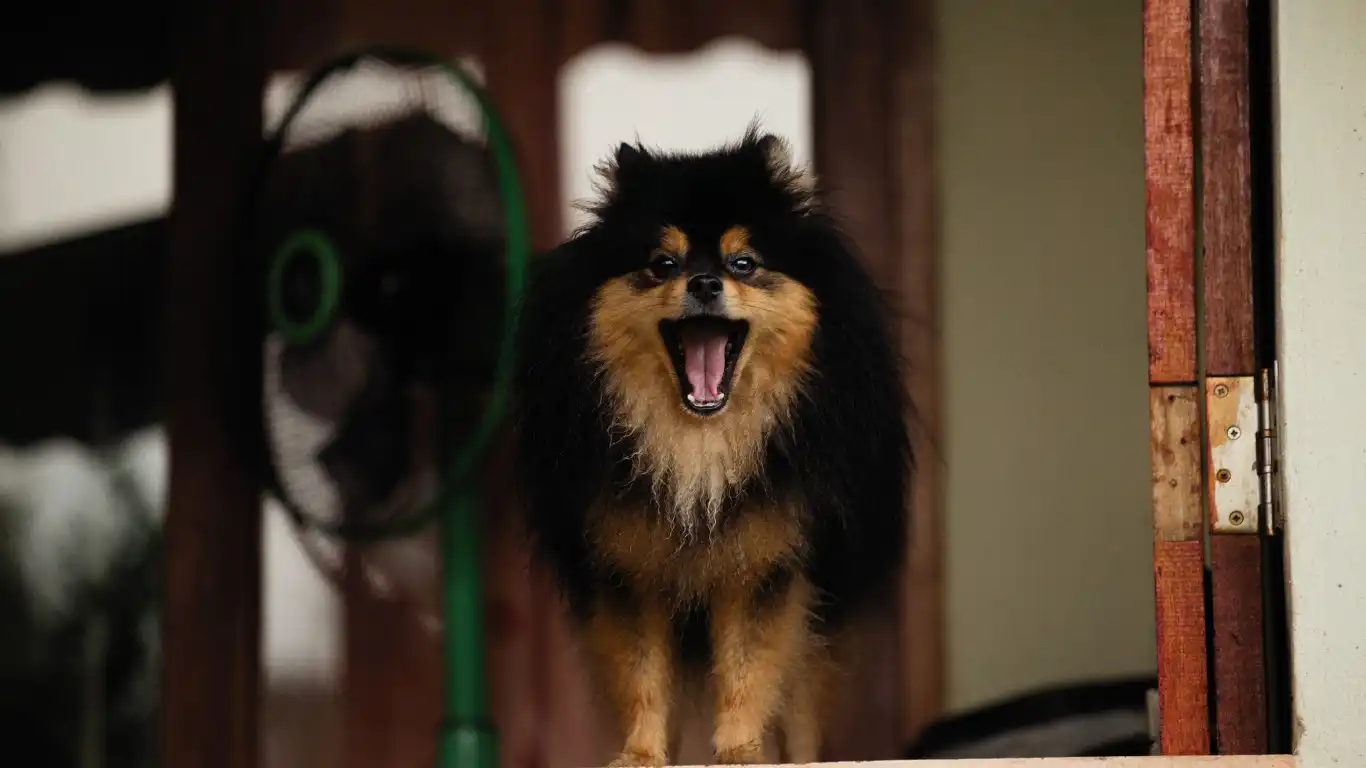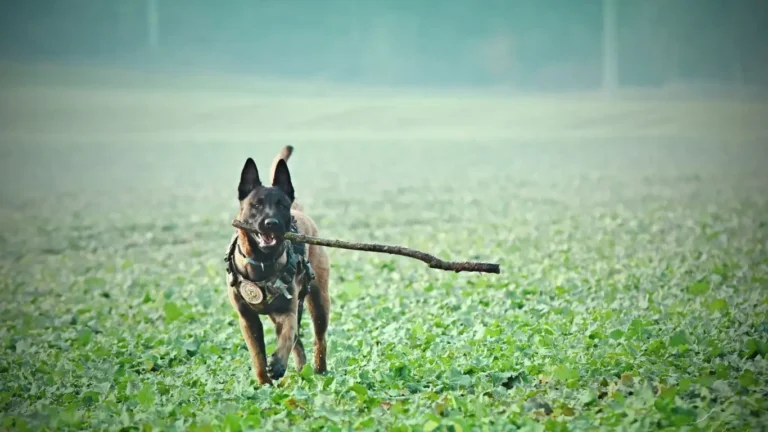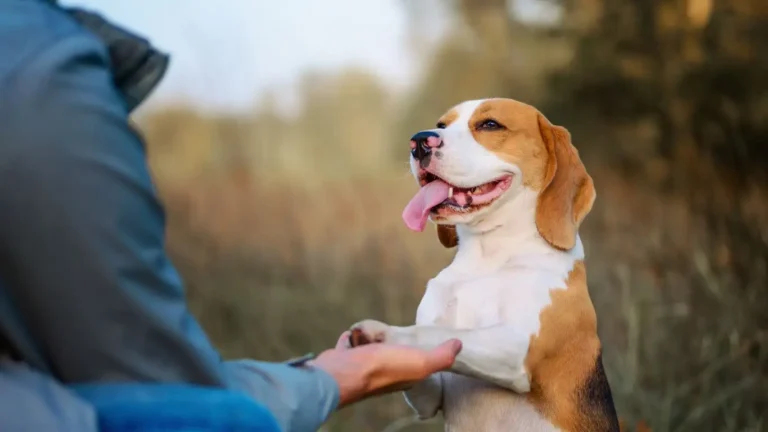Top 10 Best Ways to Prevent Your Dog from Escaping the Yard
As a Veterinary Technician with a specialty in nutrition, I’ve seen countless dogs make a break for it, often to the surprise of their owners. Whether it’s a playful pup who just can’t resist the call of the open world or a more determined escape artist looking for adventure, preventing a dog from escaping the yard is a constant concern for pet owners. When we bring dogs into our homes, we want them to be safe and secure, and that includes making sure they stay within the yard. But as many of us know, dogs are smart, and they can be incredibly resourceful when it comes to finding ways to escape. From digging under fences to climbing over them, there’s no shortage of creative ways dogs can slip past barriers.
In this article, I’ll be walking you through the best ways to prevent a dog from escaping the yard, drawing from my personal experience and professional background. Let’s dive into some practical tips and solutions that can help keep your furry friend safe and sound.
Assess Your Yard’s Current Security
Before jumping into fixes, take a step back and assess the current situation. You’d be surprised how often small tweaks or improvements can make a huge difference in preventing escape attempts. It’s all about understanding your dog’s behavior and habits. Not all dogs are escape artists, but if you’ve noticed your dog trying to bolt for the door or digging under the fence, it’s time to take action.
Inspect Your Fence for Gaps and Weaknesses
First things first: give your fence a thorough inspection. Whether you have a wooden, chain-link, or vinyl fence, dogs can find the tiniest weaknesses. If your dog is a digger, check the bottom of the fence for any gaps they might use to slip under. For dogs that are more agile, examine the top—are there any areas they could climb or jump over?
- Look for gaps between posts.
- Check for leaning or loose sections of the fence.
- Examine areas where your dog might dig under the fence.
- Ensure there are no spots your dog can easily climb or jump over.
If you find any issues, it’s time to repair them. A few minor adjustments might be all you need to keep your dog safe inside. In my experience, even the most minor gaps can be a huge temptation for a determined dog!
Height Matters
If your dog is a jumper, you’ll want to pay close attention to the height of your fence. Certain breeds, especially athletic ones like Border Collies, Dobermans, and German Shepherds, are more likely to try jumping over a shorter fence. A fence that’s at least 5 to 6 feet tall can often do the trick for most breeds. However, if you have a dog that’s known for scaling fences, you might want to consider taller barriers or even a slanted design that makes it harder for them to get a grip.
Exercise and Mental Stimulation to Reduce Escaping Behavior
One of the main reasons dogs try to escape is that they’re simply not getting enough stimulation. Whether it’s mental or physical, if a dog is bored, they’re more likely to engage in undesirable behavior, like digging, climbing, or trying to escape. As someone who’s worked closely with dogs, I’ve seen how a lack of mental and physical activity can lead to escape attempts. Keeping your dog mentally engaged and physically tired can greatly reduce the urge to bolt.
Physical Exercise: Tiring Your Dog Out
Dogs, especially high-energy breeds, need regular exercise to keep them happy and healthy. A dog that’s well-exercised is less likely to want to leave the yard in search of adventure. Try to incorporate daily walks, runs, or playtime sessions into your dog’s routine. If your dog is constantly zooming around the yard, they’re probably less likely to focus on escaping.
- Daily walks are a great way to tire out your dog.
- Interactive play, like fetch or tug-of-war, can be fantastic for burning off energy.
- If your dog enjoys swimming, take them to a dog-friendly pool or lake.
- Consider agility training or tricks to provide both mental and physical stimulation.
Mental Stimulation: Keeping Their Minds Engaged
It’s not just about physical activity. Dogs need mental stimulation, too. Puzzle toys, treat dispensers, and training sessions can help keep their minds occupied. Dogs are intelligent creatures, and without enough mental engagement, they can easily become bored and start looking for ways to entertain themselves—often in ways that involve escaping the yard.
Consider providing enrichment activities like:
- Puzzle feeders or interactive toys that make your dog think.
- Training sessions or teaching new tricks.
- Creating a “sniffing” game, where your dog has to find hidden treats around the yard.
- Play dates with other dogs to keep them socialized and engaged.
By tiring them out both physically and mentally, you’ll have a much more content pup who won’t feel the need to escape just for something to do.
Use Barriers to Prevent Digging

If your dog is a notorious digger, there are several strategies to prevent them from tunneling under the fence. Digging is a common escape tactic, and it’s especially true for breeds with strong instincts to dig, like terriers or hounds.
Dig-Proof Your Yard
One of the most effective ways to prevent digging is to install a “dig guard” around the base of your fence. This can be done by burying a few feet of wire mesh or chicken wire along the bottom of the fence, ensuring it’s flush with the ground. You can also extend the wire horizontally so that it runs outward, making it much more difficult for your dog to dig underneath.
- Bury a few feet of wire mesh or chicken wire at the base of the fence.
- Ensure the wire runs outward to prevent digging.
- Alternatively, you can create a concrete or stone barrier around the bottom of the fence.
For dogs who are serious about digging, you may need to take extra precautions. Installing a solid base, such as cement or large, heavy rocks, can stop a dog from tunneling under the fence. It’s not the cheapest solution, but it works like a charm if you’re dealing with a determined escape artist.

Consider Technology for Added Security
In the modern world, technology can be a great help in keeping your dog safe within your yard. There are several high-tech solutions available to enhance security and prevent escapes.
Invisible Fences
Invisible fences are a popular option for pet owners who want to keep their dogs within a certain boundary without a physical fence. These systems work by using a collar that delivers a mild shock or vibration whenever the dog crosses the boundary line. While I’ve found that some dogs respond well to invisible fences, it’s important to remember that they’re not foolproof. Some dogs may ignore the mild shock, while others might become frightened or anxious. I recommend using invisible fences in conjunction with other physical barriers, especially if your dog is prone to bolting.
- Invisible fences can be effective, but not all dogs respond the same way.
- Use them alongside physical barriers to reinforce the boundary.

Creating a Secure and Engaging Yard for Your Dog
Another key to preventing your dog from escaping the yard lies in making your yard as interesting and comfortable as possible. If your dog feels that there’s nothing keeping them entertained or engaged inside the yard, they might see the outside world as an exciting place to explore. One of the best ways to reduce escape attempts is to make sure that your yard offers enough stimulation to keep your dog happy and occupied. Drawing from my experience with dogs of various breeds and temperaments, creating an environment that meets both their physical and mental needs can work wonders in reducing the urge to bolt.
Provide a Designated Play Area
Dogs are naturally curious and playful, and they love a good game or adventure. A great way to keep your dog engaged in the yard is by designating a specific play area where they can safely enjoy their time outside. Consider setting up a space with toys, a dog-friendly pool, or even an agility course if you have the space. This creates a “play zone” that can distract your dog from any thoughts of escaping.
- Set up a play area with a variety of toys that encourage physical activity.
- Invest in a dog-friendly pool if your dog enjoys water play.
- If you have room, consider setting up a small agility course with tunnels and jumps.
During the summer months, having a water feature can be an absolute lifesaver, especially for breeds that love to swim. Dogs like Labradors, Retrievers, and even some smaller breeds are often drawn to water, and providing them with a pool or sprinkler system in the yard can help them burn off energy while keeping them occupied. Trust me, a wet dog after a good splash around isn’t going anywhere for a while!

Utilize Fencing Add-Ons to Enhance Yard Security
While a strong fence is essential, there are a few creative ways to enhance your existing fence to make it even more escape-proof. Sometimes, it’s the little things that make all the difference, and in my years of working with dogs, I’ve seen some clever tricks that can add a layer of security without the need for a full fence overhaul. Let’s talk about some of those add-ons that could help keep your dog from finding a way out.
Fence Toppers: Keeping Dogs from Climbing
If your dog is a climber, adding a fence topper can be a great solution. These additions extend the height of your fence and make it harder for your dog to scale. A variety of fence toppers are available, from mesh netting to angled extensions that make it much more difficult for your dog to grip and climb. Dogs like Huskies, Shepherds, and Dobermans can be particularly prone to scaling fences, so it’s worth considering this option if your dog fits that bill.
- Install a vertical or angled topper that increases the fence height.
- Choose materials like mesh or metal that are difficult for dogs to climb.
- Consider using clear acrylic fence extensions for a more subtle appearance.
I’ve seen this solution work wonders for a few of my clients with escape artists. The key is to find a topper that not only adds height but also makes it difficult for your dog to gain traction. Some dogs will give up if they can’t find a place to grip, so this might be the perfect option if your dog’s climbing skills are causing you headaches.
Rolling Bars to Prevent Climbing
Another option for dogs that are determined climbers is installing rolling bars along the top of the fence. These bars rotate when the dog tries to climb, making it difficult for them to get a solid grip and scale the fence. This option is especially useful if you’ve tried taller fences or other methods but still struggle with a dog that is truly persistent in trying to escape.
- Install rolling bars along the top of the fence for a smooth, rotating surface.
- Make sure the bars are positioned in a way that makes climbing nearly impossible.
It may look a little unusual, but rolling bars are a great solution for dogs that can’t seem to resist the temptation to climb. Plus, they’re relatively easy to install and don’t require you to replace your entire fence.

Consider a Dog Run or Kennel
If you live in an area with a large yard but struggle with keeping your dog contained, a dog run or enclosed kennel might be the perfect solution. A dog run is a fenced-off area within your larger yard where your dog can safely play and exercise without the risk of escaping. This is especially beneficial for dogs that enjoy being outside but can’t be trusted to stay in the yard unsupervised. It also works well for owners who want their dog to get fresh air and exercise but can’t always supervise them 100% of the time.
Building a Dog Run
If you have the space and are willing to invest a little more effort into the yard, building a dog run is an excellent way to contain your dog while still giving them plenty of room to roam. When creating a dog run, be sure to choose sturdy materials that are escape-proof. For example, chain-link fencing is a popular option because it’s durable and easy to install. You can make it as large as you want, and it gives your dog a safe, enclosed space to stretch their legs and burn off energy.
- Choose sturdy, durable materials like chain-link or metal for the run.
- Ensure the dog run is tall enough to prevent jumping or climbing.
- Provide shelter or shade to ensure your dog is comfortable while spending time in the run.
Dogs that are kept in dog runs tend to feel less anxious and more secure because they have their own designated space. They can still interact with you and have access to fresh air, but they’re safely contained within an enclosed area. It’s a great compromise if you want to give your dog more freedom while maintaining security.
Benefits of Using an Enclosed Kennel
If you don’t have the room for a full dog run, or if your dog is prone to escaping even in a large area, an enclosed kennel could be the answer. A kennel provides a secure space for your dog to stay while outside, and it’s perfect for times when you need to keep them contained but still allow them some outdoor time. You can set up the kennel in the yard and let your dog relax while you handle other things, knowing they won’t be able to escape.
- Kenels offer secure, enclosed spaces for dogs to stay in while outside.
- They can be moved around the yard for variety and comfort.
- Perfect for dogs that need to be monitored or have a tendency to escape.

Training Your Dog to Stay in the Yard
Training your dog to stay inside the yard is an important aspect of preventing escapes. While physical barriers and environmental changes help, teaching your dog the boundaries and reinforcing good behavior is just as critical. After all, no fence is completely foolproof without proper training.
Teach Basic Boundary Training
Boundary training teaches your dog the limits of your yard, helping them understand where they are and aren’t allowed to go. This can be done using positive reinforcement methods. Start by walking your dog along the edge of the yard and using commands like “stay” or “no” when they attempt to get too close to the fence or gate. Every time they stay inside the boundary, reward them with praise or a treat. Over time, your dog will begin to understand that certain areas are off-limits.
- Start with leash training near the boundary of the yard.
- Use positive reinforcement (treats, praise) when your dog stays inside the yard.
- Gradually increase the difficulty by removing the leash and allowing your dog to roam freely while monitoring.
Keeping Your Dog Safe with Supervision and Routine
Even with all the precautions in place, sometimes the best way to prevent a dog from escaping the yard is through active supervision and routine. If you’re someone who’s always busy or spends a lot of time away from home, you might find that your dog has more opportunities to try and make a run for it. However, by incorporating a few simple steps into your routine, you can dramatically reduce the chances of an escape. I can’t tell you how many times I’ve seen dogs try to sneak past their owners when they’re not paying attention, and trust me, dogs are quick when they want to be!
Establish a Routine for Outdoor Time
Establishing a routine for when your dog spends time outside is one of the best ways to keep them safe. Dogs thrive on routine, and having set times for outdoor play or potty breaks can help keep things predictable. If your dog knows when it’s time to go outside, they’ll be less likely to try and sneak out when the opportunity arises. Additionally, you’ll be more likely to catch them before they get too far if you’re out with them during these scheduled breaks.
- Set specific times for outdoor breaks, walks, and play sessions.
- Make sure to supervise your dog when they’re outside to catch any sneaky escape attempts.
- Rotate activities to keep things interesting for your dog.
Another benefit of a routine is that it can help your dog build trust and familiarity with the yard, which can discourage any attempts at running away. As a veterinary technician, I’ve seen firsthand how dogs can start to feel anxious or stressed if their outdoor time is unpredictable. A consistent routine helps reduce anxiety, and when dogs feel secure, they are less likely to bolt when they sense an opening.

Securing Your Yard with Technology
In the 21st century, technology can be a real game-changer when it comes to keeping your dog safe. We’ve all heard about smart home devices like security cameras and motion detectors, but did you know that some of these can be adapted to keep your dog from escaping? Whether it’s monitoring your yard when you’re away or using automated solutions to reinforce boundaries, tech can be an extra layer of protection that offers peace of mind.
Surveillance Cameras for Monitoring Your Yard
One of the easiest ways to monitor your dog’s behavior in the yard is by setting up a surveillance camera. These cameras are more affordable than ever and can help you keep an eye on your dog’s activities, especially if you’re not home. In my experience, using a camera can alert you to any escape attempts in real time. Many cameras even come with apps that allow you to monitor your yard from your phone. If you’re someone who’s worried about your dog sneaking out while you’re away, this technology could be your best friend.
- Install a weatherproof camera that provides clear visuals of your yard.
- Choose a system that allows you to view your yard from your phone or tablet.
- Set up motion sensors that send you alerts if movement is detected near the fence.
Having a camera also provides a great opportunity for you to review what’s going on in your yard. You might discover patterns that show your dog’s favorite escape spots or uncover any areas where your fence may need additional reinforcement. I’ve had clients who used cameras and were able to catch their dog right before they jumped over the fence, allowing them to address the problem before it became a bigger issue.
Electronic Fencing: A High-Tech Solution
If you’ve considered traditional physical fencing but are looking for a more high-tech solution, an electronic or invisible fence might be worth considering. These fences work by setting up an underground perimeter around your yard that communicates with a collar worn by your dog. If your dog approaches the boundary, the collar will deliver a warning sound or a mild shock to discourage them from crossing the line.
It’s important to note that electronic fences should be used in conjunction with other methods, like training and physical barriers, as they aren’t foolproof on their own. Some dogs might ignore the mild shock or vibration, especially if they are very determined. That being said, electronic fences can still be highly effective for many dogs when paired with proper training.
- Set up an electronic fence to create a clear boundary without a physical fence.
- Use in conjunction with training to ensure your dog learns the boundaries.
- Ensure your dog is comfortable with the collar and is not scared by the system.
In my opinion, electronic fencing is a great addition to a well-rounded approach to yard security. It gives you the flexibility of adding boundaries without major construction, and if done correctly, it can keep your dog safe and sound.
Training and Behavioral Strategies to Reduce Escaping
While physical barriers and tech solutions are great, there’s no substitute for training when it comes to reducing a dog’s desire to escape. In my experience, the most successful dog owners are those who take a proactive approach by combining physical security with effective training techniques. Behavior modification and consistent boundaries are key to preventing escape attempts in the first place.
Positive Reinforcement for Boundary Training
Positive reinforcement is one of the most effective training methods, especially when it comes to teaching your dog the boundaries of your yard. When your dog stays inside the yard or obeys your commands, reward them with treats, praise, or playtime. This helps your dog associate staying in the yard with positive experiences, rather than feeling the need to break free for excitement.
- Reward your dog with treats or praise when they stay within the boundary.
- Use clicker training or verbal cues to reinforce desired behavior.
- Consistency is key—make sure everyone in the household follows the same training routines.
The more consistent you are with training, the more your dog will learn to respect the boundaries you set. It’s important to start training early and make it a fun and positive experience for your dog. I’ve found that dogs who receive regular, positive reinforcement are far less likely to test their boundaries or escape when they know their actions will lead to rewards.
Addressing Separation Anxiety
Sometimes, dogs escape because they suffer from separation anxiety. This is particularly common in dogs that are left alone in the yard or outside for extended periods of time. If your dog experiences anxiety when left alone, they may try to escape in search of their owner or because they’re feeling stressed or scared. In these cases, it’s essential to address the root cause of the behavior.
Training techniques, environmental changes, and even consultation with a professional trainer or behaviorist can help alleviate separation anxiety. For instance, creating a more comfortable outdoor space with access to shelter or a favorite toy can help. If necessary, you may want to consult with a veterinary behaviorist who can guide you through behavioral modification plans tailored to your dog’s specific needs.
As a veterinary technician, I’ve seen that addressing separation anxiety can be a game-changer. Sometimes the issue isn’t just that the dog wants to run away—it’s that they’re desperately trying to find their owner or escape an anxiety-triggering situation. Helping your dog feel secure and calm is just as important as creating physical barriers to keep them safe.

References
For more information on preventing your dog from escaping, consider visiting the following resources:
- American Kennel Club (AKC)
- ASPCA – American Society for the Prevention of Cruelty to Animals
- AKC – How to Train Your Dog
Disclaimer
The information provided in this article is intended for general guidance and educational purposes only. While I strive to provide the best advice based on my experience as a veterinary technician, it is important to consult with a professional trainer or veterinarian for advice tailored to your dog’s specific needs. If you have concerns about your dog’s behavior, health, or safety, please reach out to a licensed professional for further assistance.






